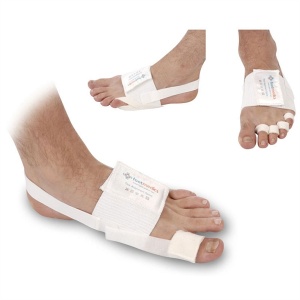| Causes of Hammer Toes12 August 2015 | John Hammer Toe is where one or more of the lesser toes (the toes which aren’t the big toe) always seem to be bent. This is because the first joint of the toe has contracted, usually because of a ligament and muscle imbalance around the toe joint. There are several causes of hammer toes: High HeelsHigh heels are considered by most doctors to be the main reason women are more likely to develop hammer toes than men. They cause toes to unnaturally taper to a point, and the higher the heel the more pressure it puts on the toes and the surrounding muscles and tendons. Eventually, this puts your toe muscles out of alignment. High ArchesA high arch (also known as a high instep or pes cavus) can cause a hammer toe to develop. This is for a similar reason to why high heels can cause hammer toe. The high arch puts too much pressure on the toes; as you walk, it causes more force to be applied to the toes and the front of the foot because there’s little or no arch to take the strain away. Flat FeetOn the other end of the spectrum, flat feet (also known as low arches or collapsed arches) can also cause hammer toes to develop. Because it causes your feet to be slightly unstable, those with flat feet can rely more on their toes than someone with a standard arch. This strain can eventually cause hammer toe to develop. BunionsA bunion can also cause hammer toe to develop. Because a bunion causes the big toe to turn inward and squeeze the lesser toes, it applies strain to the muscles and tendons which control these toes. After a while, this constant strain can cause the muscles and tendons to come out of alignment and result in a hammer toe developing. ArthritisArthritis is another common cause of hammer toe, especially in older people. Because it causes joints to become inflamed, it can cause the tendons and muscles surrounding the joints in your toes to slip out of balance, causing hammer toe to develop. InjuryA toe injury, even one as simple as a stubbing or break can cause hammer toe. This is because the sudden trauma can force the muscles and tendons surrounding your toes to slip out of alignment, potentially causing hammer toe to develop. While this is rare, repeated trauma to one or more of the toes increases the chance of hammer toe developing. One of the ways you can correct some of the causes of hammer toe is to wear a shoe insole. For example, a shoe insole designed to help with flat feet helps to support the collapsed arch, reducing the strain on the toes and the surrounding muscles and tendons. Some shoe insoles are also designed to help specifically with hammer toe. If you’re interested in getting a shoe insole to help with hammer toes, head on over to Shoe Insoles and check out our range of Insoles for Hammer Toes.
|










